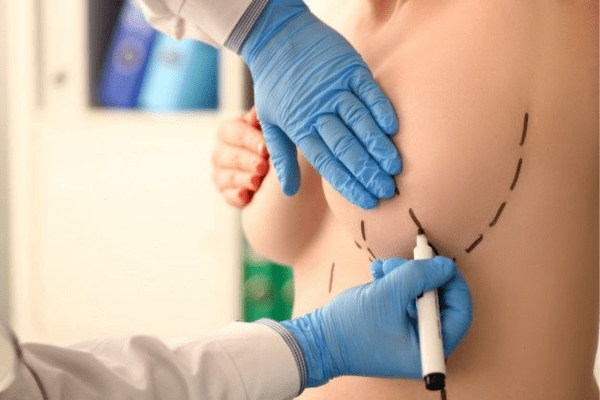Breast
Breast Surgery: Everything You Need To Know

Breast surgery, also known as mammoplasty, is a cosmetic surgical procedure that aims to improve the size, shape, or symmetry of the breasts. Breast surgery can be performed for aesthetic reasons, such as to enhance the appearance of the breasts, or for reconstructive reasons, such as after a mastectomy. In this article, we will discuss the different types of breast surgery, their benefits and risks, and what to expect during and after the procedure.
Types of Breast Surgery
There are several types of breast surgery, each designed to address different concerns.
- Breast Augmentation
Breast augmentation, also known as breast enlargement, is a surgical procedure that involves placing implants in the breast tissue to increase its size and volume. The implants can be made of silicone or saline and come in a variety of shapes and sizes. The procedure takes about one to two hours to complete and is usually performed under general anesthesia.
- Breast Lift
Breast lift, also known as mastopexy, is a surgical procedure that involves lifting and reshaping sagging breasts. The procedure can also reduce the size of the areola, the darker skin surrounding the nipple. The surgery takes about one to three hours to complete and is usually performed under general anesthesia.
- Breast Reduction
Breast reduction, also known as reduction mammaplasty, is a surgical procedure that involves removing excess breast tissue, fat, and skin to reduce the size of the breasts. The procedure can relieve symptoms such as back pain, neck pain, and shoulder pain caused by the weight of the breasts. The surgery takes about two to four hours to complete and is usually performed under general anesthesia.
- Breast Reconstruction
Breast reconstruction is a surgical procedure that involves rebuilding the breast tissue after a mastectomy. The procedure can be done immediately after the mastectomy or delayed until the patient has healed. The reconstruction can be done using implants or tissue from other parts of the body, such as the abdomen or buttocks.
Benefits of Breast Surgery
Breast surgery can have many benefits, including:
- Improved appearance and self-confidence
It can enhance the size, shape, and symmetry of the breasts, which can improve a person’s self-confidence and self-esteem.
- Relief of physical symptoms
Breast reduction surgery can alleviate back pain, neck pain, and shoulder pain caused by the weight of the breasts.
- Restoration of breast tissue
Breast reconstruction surgery can restore the appearance of the breast tissue after a mastectomy.
Risks of Breast Surgery
Like any surgical procedure, it also comes with risks. Some of the risks include:
- Infection
Infection can occur after any surgical procedure, including breast surgery. Patients are given antibiotics to help prevent infection.
- Bleeding
Bleeding can occur during or after the procedure. If it is severe, it may require a blood transfusion.
- Scarring
Scarring is a common side effect of breast surgery. The amount of scarring will depend on the type of procedure and the patient’s healing ability.
- Implant rupture or leakage
Implant rupture or leakage can occur with breast implants. Patients are advised to have regular check-ups to ensure the implants are functioning properly.
What to Expect During and After the Surgery
Before the procedure, the surgeon will discuss the patient’s expectations and medical history. The surgeon will also discuss the risks and benefits of the procedure and answer any questions the patient may have.
During the procedure, the patient is placed under general anesthesia. The surgeon makes incisions in the breast tissue and inserts the implants, removes excess tissue, or reshapes the breast tissue.
After the procedure, the patient will need to wear a surgical bra to support the breasts and minimize swelling. Pain medication may be prescribed to manage any discomfort








